Southwest Michigan Field Crops Regional Report, May 26, 2022
Corn, soybean, and wheat heads are emerging!

Weather
Temperatures this past week were below average albeit riding a roller coaster with above-normal temps late last week and below-normal temps this week. We accumulated only 80 growing degree days (GDD base 50) this past week. The mild weather has catapulted our cool season forages and winter wheat ahead in growth and development. The current forecast is for another 140 GDD50 to be added this coming week as temps turn summer-like over the Memorial Day weekend. These warmer temperatures coupled with moderate winds will result in rather high potential evapotranspiration rates of 1.4-1.5 inches this coming week. The medium-range outlooks call for normal temps turning to below-normal during the first week of June.
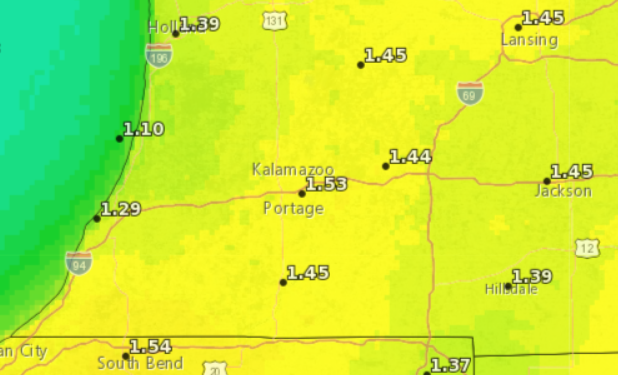
Precipitation this past week was near normal with 0.5-1.5 inches for most of the region. However, as it was spread out over several days with a few dry days in between, fields with lighter-textured soils were able to dry out to some extent allowing for continued field work while those with heavier soils have likely remained too wet to traffic. The forecast for this coming week should afford many more opportunities for field work as there are only very low chances of rain after today until the middle of next week. The medium-range outlook calls for near-normal rainfall the first week of June although the confidence level in this forecast is relatively low according to MSU Extension climatologist Jeff Andresen.
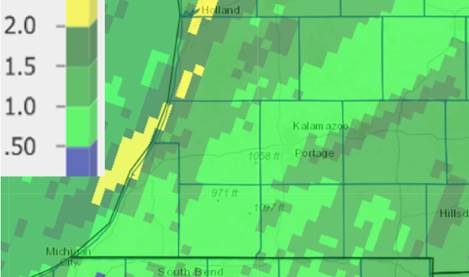
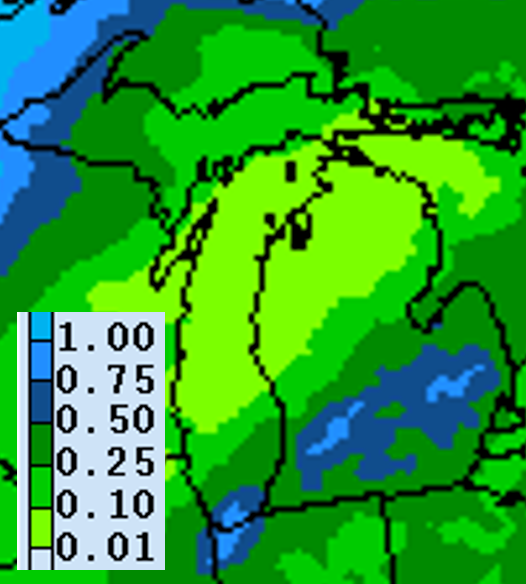
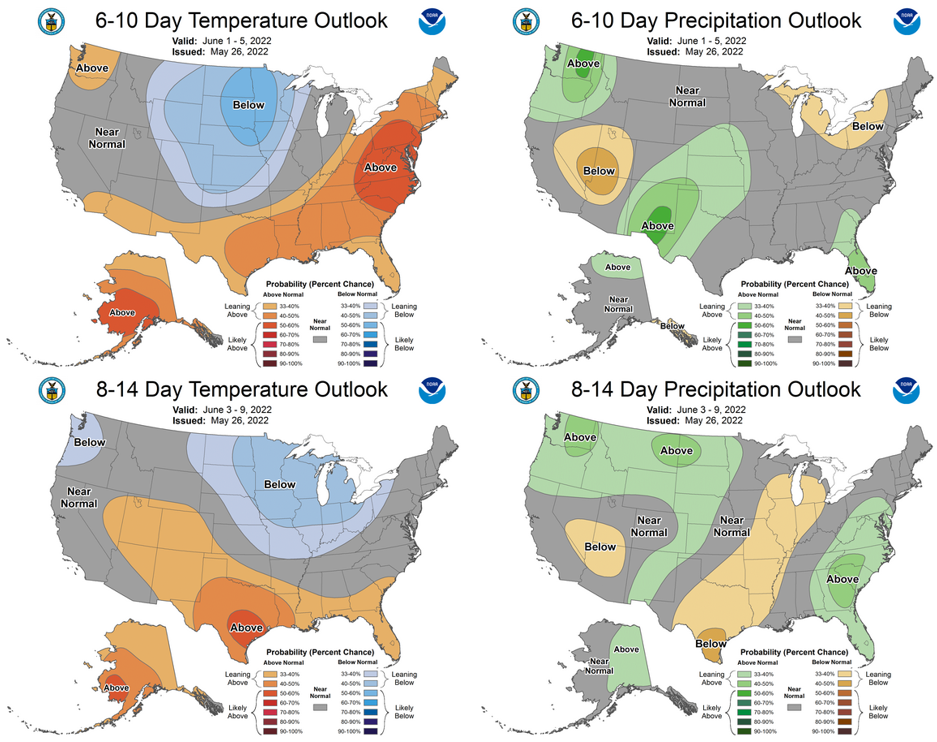
Crops and Pests
Wheat in Michigan was rated at 49% good to excellent, holding steady from the prior week. Many fields were between the boot and heading stage (Feekes 10.0-10.1) although other fields appeared to be further along (Feekes 10.3). Cereal rye has begun flowering already. MSU Extension field crop pathologist Marty Chilvers says the optimum time to apply a fungicide to both protect the head and the flag leaf is once heads have fully emerged, up to 7 days post head emergence, with recent research demonstrating 4 days post head emergence being optimal for head scab and DON suppression. According to the Fusarium Risk Tool managed by Penn State, risk of head scab is currently low for the next six days for all but varieties that are very susceptible.
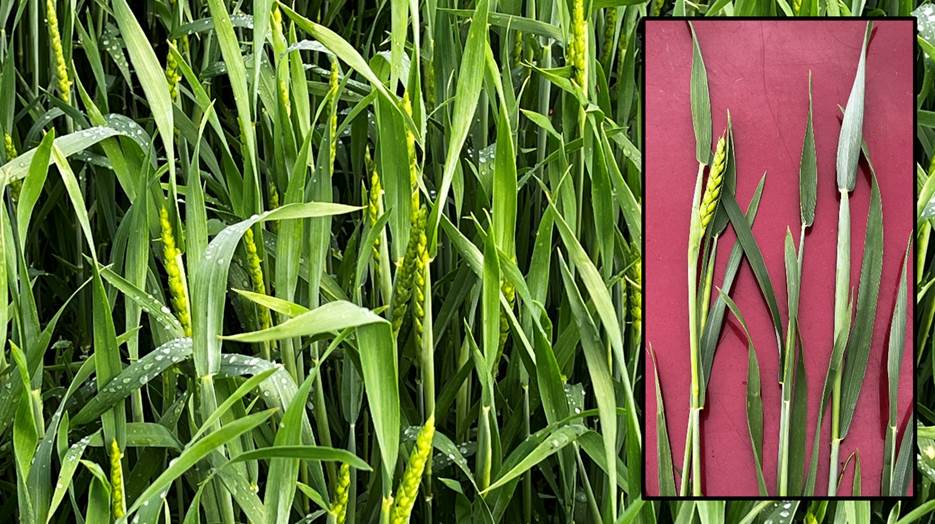
Corn and soybean planting continued to progress this past week with both crops having reached the 5-year average by the end of last week—60% for corn and 47% for soybean. Emergence was only 18% and 13% for corn and soybean, respectively, but corn emergence in our region has progressed well beyond that this week. With another 140 GDD50 forecasted to accumulate in the coming week, all seed already in the ground should reach crop emergence by this time next week.
Insects
Moth trap counts in the region this past week were low once again with all trap counts in the single digits. Trapping for black cutworm (BCW) has ended in Purdue’s network with relatively low levels this season. Counts for true armyworm (TAW) have remained low throughout Michigan and dropped off from the previous week in northern Indiana. The high catches in the northern tier of Indiana were due to very high counts at the Northeast Purdue Ag Center (Whitley County). When scouting, look for notching or “windowpane” feeding on corn leaves early on while TAW larvae are small—see pictures from Purdue’s crop entomologists in a recent article.




 Print
Print Email
Email




